| |
|
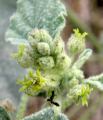 | |
| MaltaWildPlants.com by Stephen Mifsud |

|
| |
|
|
 |  |  |  |
| External Links: |
|
Asphodelus fistulosus (Onion Weed) |
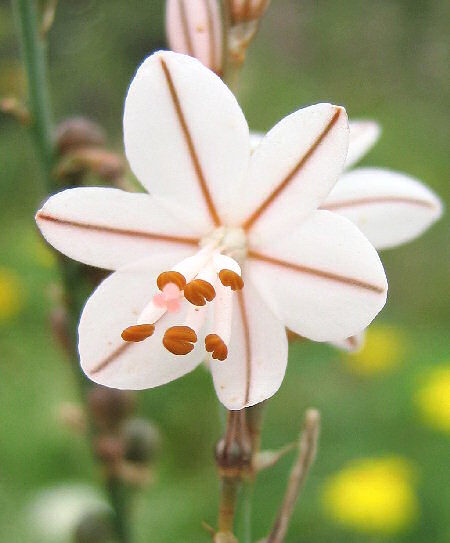
Asphodelus fistulosus (XANTHORRHOEACEAE.)
Images for this profile are taken from the Maltese Islands after year 2000. |
|
| Nomenclature |
Species name : | Asphodelus fistulosus L | Authority : | Carl von Linne, Sweden, (1707 - 1778) | Synonyms :
(basionym or principal syn.) |
|
Plant Family : | Xanthorrhoeaceae (= Liliaceae ) (Previously placed in the Asphodelaceae Family)
( Family) | English name(s) : | Onion Weed, Pink Asphodel, Onion-leaved Asphodel | Maltese name(s) : | Berwieq Żgħir | Status for Malta : | Indigenous. Present on the Maltese islands before man | Name Derivation : |
Asphodelus: apparently asphodel was used to refer a duplicate or copy of a Lily or Daffodil plant (for its close resemblance) but with eaten roots, since the first described plants for this genus did not have much roots, but only tubers. (Greek origin ); 2 = The asphodel, a lily like plant with "eaten" roots, since the plant does not have much roots (Greek).
fistulosus: Hollow or tubular, usually referring to the stalks but in this case for the hollowed leaves. (Latin origin ); 2 = Hollow or tubular, usually referring to the stalks (Latin).
| Remarks : | |
|
| Morphology and structure |
PLANT STRUCTURE: |
Character | Growth Form | Branching | Surface |
Description | | | |
General
Picture |  | 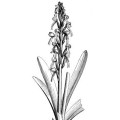 |  |
|
LEAVES: |
Character | Arrangement | Attachment | Venation |
Description | | | |
General
Picture | 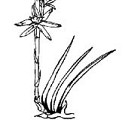 | 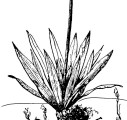 |  |
| |
Character | Leaf Shape | Leaf Margin | Remarks |
Description | | | |
General
Picture |  |  |  |
|
FLOWERS: |
Character | Colour | Basic Flower Type | No. of Petals | No. of Sepals |
Description | White with a central longitudinal orange-brown stripe in verey petal. | | 6 To be botanically precise, the flower has 3 sepals (outer whorl) and 3 petals (inner whorl) which are identical, and so they are collectively referred to as 6 tepals or perianth segments. | 0 |
General
Picture | | 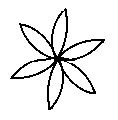 |  |  |
| |
Character | Inflorescence | Description | Ovary | Stamens |
Description | | The flower consists of 6 oval, wax-white petals; 6 drooping anthers composed of a white stubby filament and an orange brown anther; 1 central white style that have a 3-parted pink stigma ; and a central and superior ovary which is enclosed by a white cap. | | |
General
Picture |  |  | 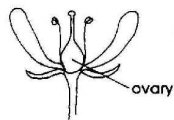 | 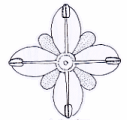 |
| |
Character | Scent | Average Flower Size | Pollen Colour | Other Notes |
Description | YES Honey-like fragrance especially in young flowers. | 20mm | Orange-Brown | - |
|
SEEDS: |
Character | No. Per Fruit | Shape | Size | Colour |
Description | 6-18 | Spear-head | 2-3mm | Dark grey |
General
Picture |  |  |  |  |
|
FRUIT AND OTHER BOTANICAL DATA: |
Character | Fruit Type | Colour of Fruit | Subterranean Parts | Other Notes |
Description | | Green with 3 dark stripes | | - |
General
Picture | 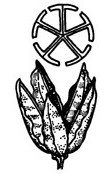 |  | 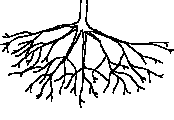 |  |
|
|
| Plant description and characters | |
Life Cycle: | Perennial. |
Growth Form: | HEMICRYPTOPHYTE (prostate plants with flowers close to the ground) |
Habitat: | Road sides, traffic islands, arid rocky ground, footpaths |
Frequency: | Very Rare |
Localities in Malta: | Rare. Few plants found near Calypso cave in Gozo, and on the fortifications of the Argotti Botanical Gardens in Malta. |
Plant Height: | 30-60cm. |
| Jan-Apr |
Protection in Malta: | Not legally protected till the last update of this website (2/Mar/2022) |
Red List 1989: | Threatened status for the Maltese Islands and has been listed in the Red Data Book (1st ed.) |
Poison: | |
This monocot is a perennial which grows from underground fibrous roots. It is seen as a rosette of basal leaves multiple and several unbranched flowering stems.
The plant have several long basal leaves which grow from the underground roots as a rosette. The grey-green leaves are linear in shape, 20-35cm long and just 0.3-0.5 cm wide. Their margin is smooth. The cross section of the leaf is semi-cylindrical and hollowed (like a tube), hence the species name 'fistulosus'. Usually the leaves remain erect and do not bend down. Since the leaves look similar to the onion, this plant got the name of Onion weed. The flowering stem is glabrous, and un-branched producing short-stalked, alternate flowers along its length. Therefore the inflorescences are described as racemes
Flowers are attached to the flowering stalk by 0.5mm long pedicel. In every raceme, the bottom flower opens first and slowly the flowers above blooms one by one. Every single flower remains in bloom for several days. The flower buds are made from the petals itself, since they do not have any true distinctive sepals. The buds are bullet-shaped, and have a white colour with brown vertical stripes.
When the buds open up, they produce a flower with 6 wax-white, oval petals each having a central reddish-brown mid-vein. The most noticable part of the flower is however the 6 stamens which are drooping, and about 8mm long. Each stamen consists of a stubby white filament and a conspicuous large brown anther covered with orange pollen. The central and single style+stigma is slightly longer than the anthers which are about 10mm long. The stigma is divided into 3 inflated pink structures. The flower measures approximately 15-20mm accross, and is sweet scented.
The flower gives the false impression that the ovary has a white colour. Actually, the inferior ovary is green but it is enclosed by a whitish cap which is formed by 6 flaps each coming from the base of every stamen. The fruit are dehiscent capsules, the size of a pea (6mm c.) and splits open when the numerous black seeds are ripe in early Summer. The unripe fruit is originally orange/brown and slowly becomes green with time.
|
|
| Information, uses and other details |
Derivation of the Genus name - Asphodelus
According to an Italian site [WWW-47] Asphodelus comes from a composite Greek world as indicated below:
a = non;
spodos = ashes;
edos = valley;
So it means a valley of the remains that has not been destroyed to ashes by fire. The name is associated with the fact that this plant's underground tubers are somehow not much harmed by accidental fire, and so, these resistant tubers will quickly forms back the plant in life. So after some time, what remains after a fire are these surviving Asphodelus plants.
Another reference [WWW-03] have a completely different version, but also Greek in origin.
The ancients planted the flowers near tombs, regarding them as the form of food preferred by the dead, and many poems refer to this custom.
The name is derived from a Greek word meaning sceptre.
Nativity
Asphodelus fistulosus is native to southern France and Crete [WWW-03]
Edible Uses
The roots were used to be eaten cooked [46, 61, 105] The root is fibrous according to one report [100] whilst another says that the swollen root has radical root fibres [42] . After cooking and reducing the bulbous roots to a pulp, it is suggested it be blended into a confection with barley and buckwheat flour [WWW-33]
The plant is eaten as a vegetable, records of 'edible bulbs' seem to be erroneous [177] .
Cultivation details
Succeeds in ordinary garden soil, tolerating partial shade [200] . Requires a well-drained soil. Prefers a deep rich sandy loamy soil [1, 42] . Prefers a sunny position in a soil that is not too rich [200] . Grows well on hot dry banks [42] . Plants seem to be immune to the predations of rabbits [233] .
Propagation
Seed - sow March/April in a greenhouse and only just cover the seed. Germination usually takes place in 1 - 3 months at 15 ÓC [134] . When they are large enough to handle, prick the seedlings out into individual pots and grow them on in the greenhouse for at least their first winter. When the plants are large enough to handle, plant them out into their permanent positions in late spring or early summer. Division in early spring or autumn [111] .
Medicinal Uses
The seed is diuretic. It is also applied externally to ulcers and inflamed parts of the body. The seed contains oils rich in linoleic acid and are of value in preventing atherosclerosis [240] .
| Diuretic |
Tends to increase the flow of urine [WWW-32] |
Significance of Asphodelus
The presence of the Asphodel is often a sign of overgrazed ground since the plant is not usually eaten by animals. [274] It is also an indication of poor nutrient soil, since it is one of the few plants prefers un-rich soil. Furthermore to this it can serve as a sign of environmental or ambient degradation, since the soil is getting less in quantity and nutrients. [WWW-47] In fact one can hardly find Asphodel where there is plenty of vegetation or trees around [SM] As discussed previously, it also indicate that there was a fire in the surrounding area since the underground tubers resist such an incidence [WWW-47] .
Personal Observations
Explanation of the Common name
The plant got the common name as Onion weed, not because it forms bulbs similar in taste or shape to onions but because of the similarity of the leaves. For this reason, sometimes it is referred to as Onion-leaved Asphodel. The common Onion or Allium cepa comes from a different but very close-related family of the Asphodel, hence the Lily (Liliacea). [SM]
More detailed botanical information about the tepals
Generally the species of the Asphodelaceae and also those of the parent family Liliaceae are described to have 6 petals and no sepals. This will suit the description very well because that what appears to be. However the exact data would be that the flowers have 3 sepals and 3 petals, that are nearly identical in shape, colour and location. For example in this particular species, if one would examine carefully the flower, one should note that three petals are slightly more broad than the other 3 in an alternate way. These larger petals are the 'sepals'. However in practical botanical description, it is not wrong to describe that Lily flowers have 6 petals. A better approach would be to say it has 6 tepals instead of just petals; [SM] tepal = A perianth segment in a flower in which all the perianth segments are similar in appearance. [WWW-32]
The two Asphdelus species in Malta
Below is a table which compares some facts and important botanical aspects between the two Asphodelus species that are found in Malta, thus the A. fistulosus and the A. aestivus. [SM]
| Feature |
Asphodelus aestivus |
Asphodelus fistulosus |
| Occurence in Malta |
Common |
Rare |
| Length |
150cm c. |
50cm c. |
| Shape and length of Leaves |
Ensiform, 45cm |
Linear, 25cm |
| Branching at the flower stalk |
Many branches and sub-branches (Panicle) |
Often unbranched (Raceme) |
| Flower shape |
White with a red/brown central stripe at every petal |
White with a red/brown central stripe at every petal |
| Stamens |
6, Erect, 25mm long, |
6, Drooping, stubby, 10mm long |
| Anther colour |
Bright Orange |
Brown |
| Stigma |
Simple, white |
Divided into 3 inflated structures, pink |
| Fruit |
Orange-Brown, pea sized capsules |
Orange-Brown turning green, pea sized capsules |
|
|
| | |

